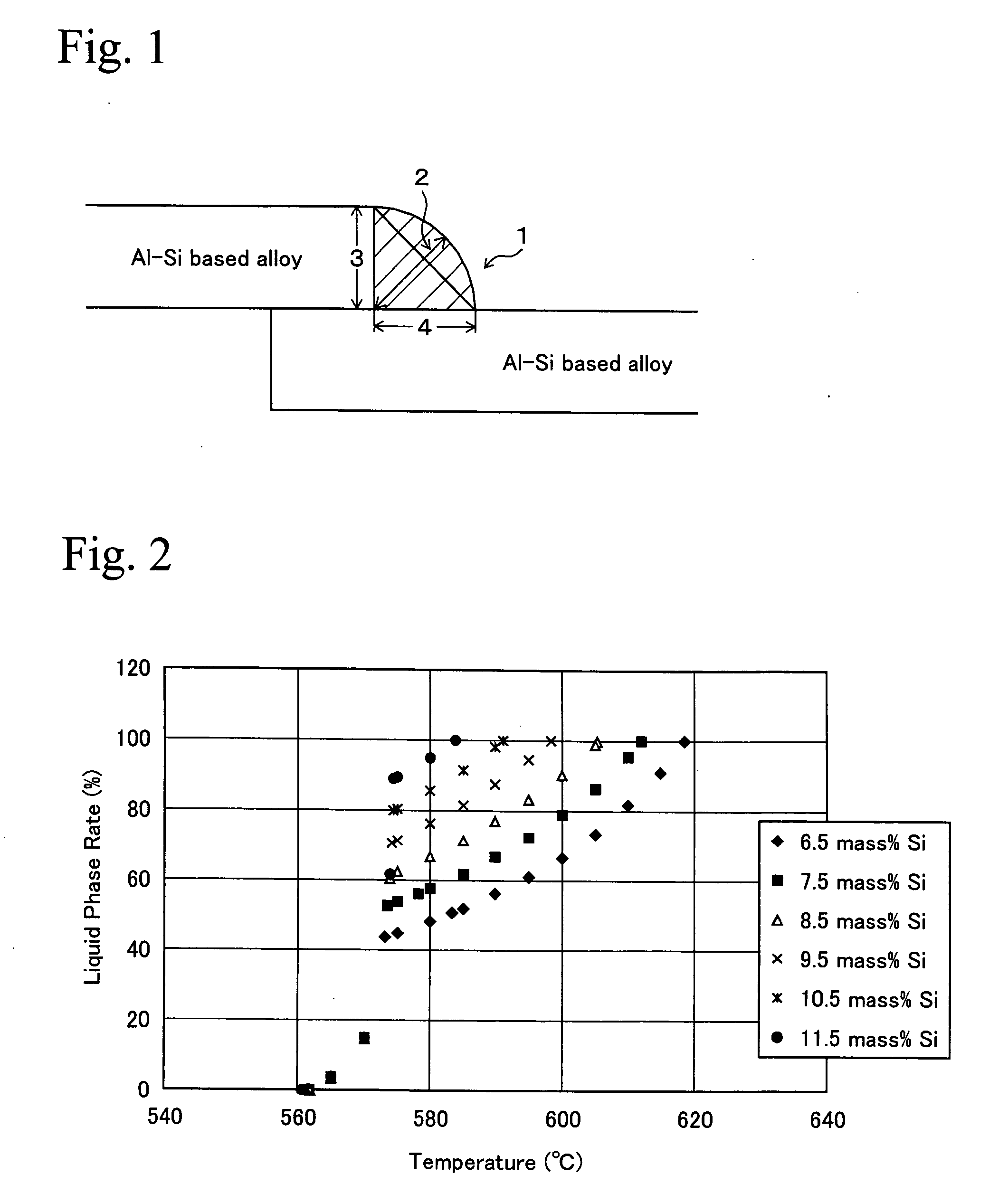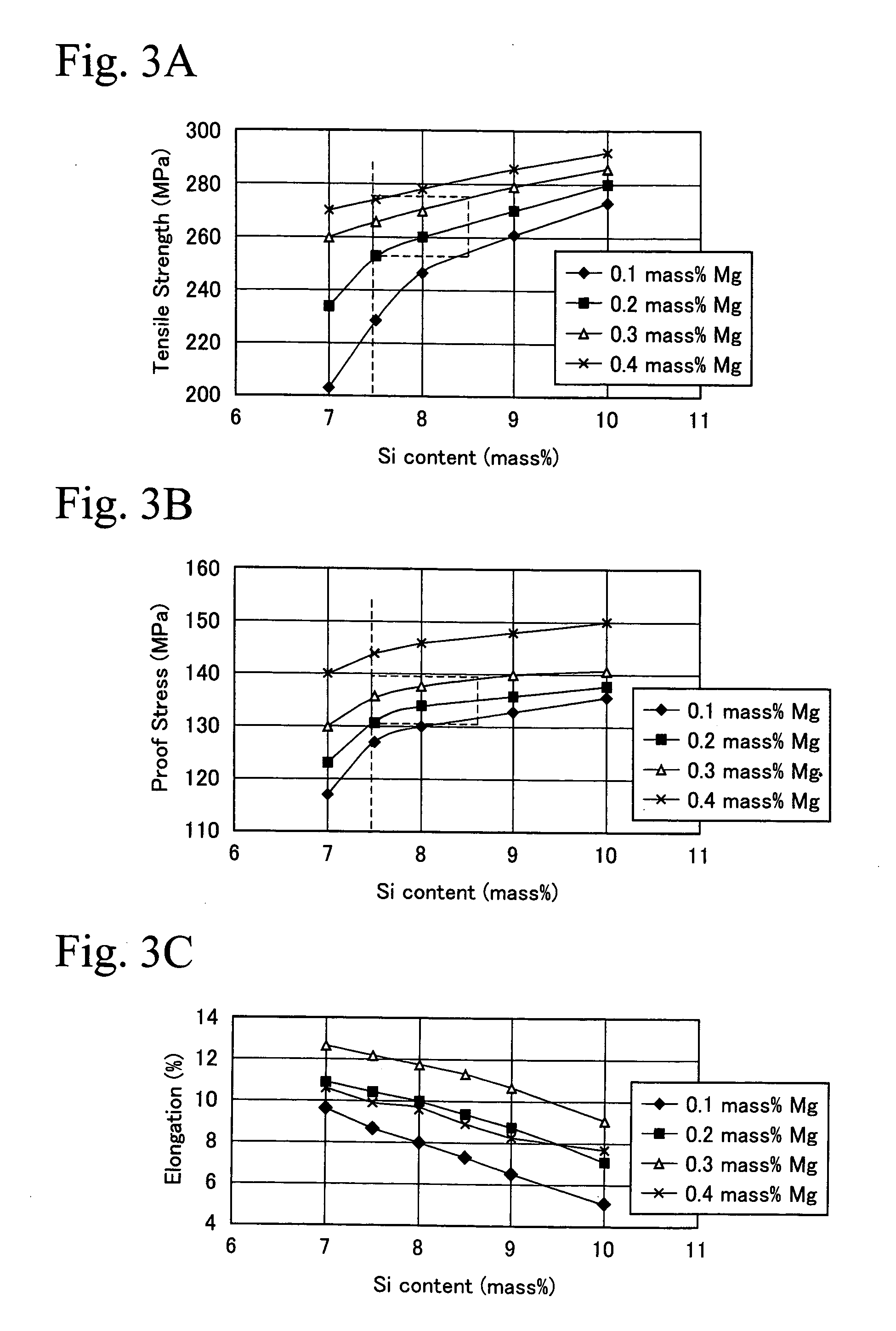Al-Si based alloy and alloy member made therefrom
- Summary
- Abstract
- Description
- Claims
- Application Information
AI Technical Summary
Benefits of technology
Problems solved by technology
Method used
Image
Examples
examples
[0032] In the following, the present invention will be explained in more detail by Examples.
[0033] Alloys having the compositions shown in Table 1 were dissolved at 720° C., respectively and then were deoxidized and degassed by molten metal treatment using Ar gas and flux. Next, under a vacuum condition at an internal pressure of a metal mold of 5 kPa and at molten metal temperature 700° C., the alloys were cast using a metal mold for plate-shaped diecasting having width of 100 mm, depth of 300 mm, and height of 5 mm, and plate-shaped diecasting products having each composition shown in Table 1 (Examples 1 to 5 and Comparative Examples 6 to 12 of the present invention) were thereby obtained. Here, temperature of the metal mold was 150° C. Subsequently, the above diecasting products were subjected to each heat treatment which was respectively suitable under the condition described in Table 1.
TABLE 1units: mass %Heating ConditionSiFeCuMnMgZnTiSr(only Aging)Example 17.50.130.140.460...
PUM
| Property | Measurement | Unit |
|---|---|---|
| Percent by mass | aaaaa | aaaaa |
| Percent by mass | aaaaa | aaaaa |
| Percent by mass | aaaaa | aaaaa |
Abstract
Description
Claims
Application Information
 Login to View More
Login to View More - R&D
- Intellectual Property
- Life Sciences
- Materials
- Tech Scout
- Unparalleled Data Quality
- Higher Quality Content
- 60% Fewer Hallucinations
Browse by: Latest US Patents, China's latest patents, Technical Efficacy Thesaurus, Application Domain, Technology Topic, Popular Technical Reports.
© 2025 PatSnap. All rights reserved.Legal|Privacy policy|Modern Slavery Act Transparency Statement|Sitemap|About US| Contact US: help@patsnap.com



